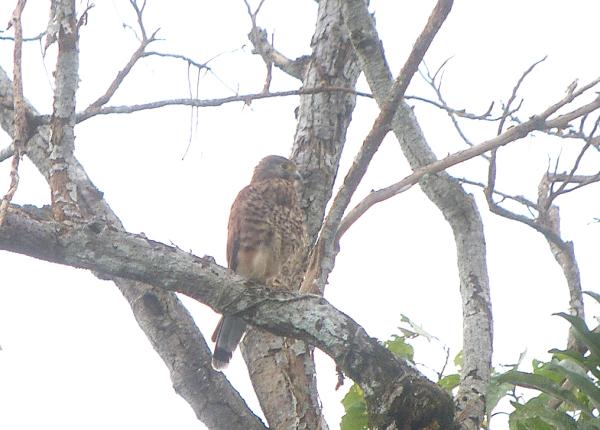Did You Know?
- There are two recognized subspecies of the Spotted Kestrel
- This species is also known as the Moluccan Kestrel
How The Peregrine Fund is Helping
Though The Peregrine Fund does not work directly with Spotted Kestrels, our efforts in scientific research, habitat conservation, education, and community development help conserve birds of prey around the world. We also supply literature to researchers from our avian research library, which helps scientists around the world gather and share important information on raptor conservation. And, finally, our support of the Global Raptor Information Network gives raptor researchers tools to more efficiently conduct their own studies while contributing to a global program. It also provides citizen scientists a way to participate in raptor science and conservation.
Where They Live
The Spotted Kestrel is lives in parts of Indonesia. It Inhabits open areas including grasslands with scattered trees, lightly wooded cultivation, and the edges of primary and tall secondary forest; also occasionally along logging roads penetrating forests, in clearings within forested areas, grazed lands, plantations, and in areas of human habitation, including towns.
What They Do
This lovely kestrel can be found singly or in pairs and even sometimes, in small groups of 5 individuals or more.
Why They Need our Help
The Spotted Kestrel is categorized as a species of Least Concern. In fact, its population might be expanding as forests are cut to create more agricultural fields. Sadly, in some parts of its range, this species is shot.
What They Eat
This kestrel feeds on a number of different prey items from insects, to small birds, lizards and small mammals. When on the hunt, it often sits on an open perch (such as a telephone pole or exposed branch) waiting and carefully watching for unsuspecting prey to walk, fly or scurry by. Like other kestrels, the Spotted Kestrel can also hover low above the ground in wait for its next meal. It will also capture winged insects in flight. It most often hunts in open areas.
Nests, Eggs, and Young
There is still so much to learn about the breeding biology and habits of the Spotted Kestrel. Like other falcons, it doesn't build its own nest, but rather lays its eggs in old stick nests built by other raptors or corvids. It also nests in holes in trees, on cliffs, and sometimes on buildings. One nest was even purportedly located in the high thatched, peaked roof of a house. The female will lay up to four eggs and biologists estimate that incubation lasts around 28 days. Apart from this, very little else is known!
Spotted Kestrel and the World Center for Birds of Prey
Though we don't house any Spotted Kestrels at the World Center for Birds of Prey, we have a number of interesting falcon species that serve as avian ambassadors during presentations and flight shows. American Kestrels, Peregrine and Aplomado Falcons, among others, can be seen at our center. We also offer many other fun ways to learn about birds of prey. The visitor center has interactive displays, tours, interesting videos and a children's room with activities from coloring sheets to quizzes to costumes and a touch table for the curious mind. Knowledgeable staff and volunteers are on hand to answer any questions you may have about Spotted Kestrels or any other bird of prey.
References:
Clark, W. S., G. M. Kirwan, and J. S. Marks (2020). Spotted Kestrel (Falco moluccensis), version 1.0. In Birds of the World (J. del Hoyo, A. Elliott, J. Sargatal, D. A. Christie, and E. de Juana, Editors). Cornell Lab of Ornithology, Ithaca, NY, USA. https://doi.org/10.2173/bow.spokes1.01
Global Raptor Information Network. 2022. Species account: Spotted Kestrel Falco moluccensis. Downloaded from http://www.globalraptors.org on 26 Oct. 2022









